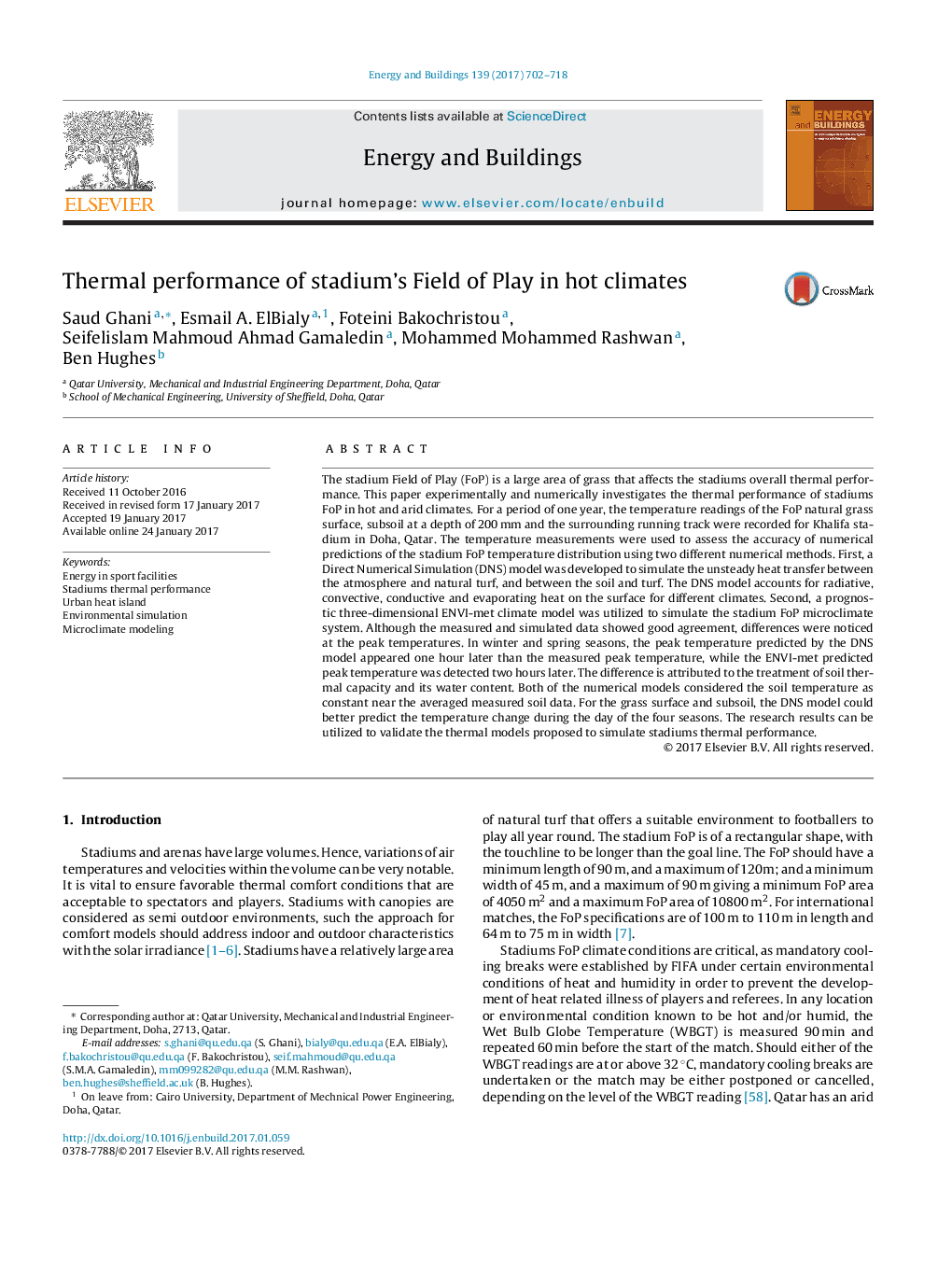| کد مقاله | کد نشریه | سال انتشار | مقاله انگلیسی | نسخه تمام متن |
|---|---|---|---|---|
| 4919358 | 1428951 | 2017 | 17 صفحه PDF | دانلود رایگان |
عنوان انگلیسی مقاله ISI
Thermal performance of stadium's Field of Play in hot climates
ترجمه فارسی عنوان
عملکرد حرارتی فیلد بازی استادیوم در هوای گرم
دانلود مقاله + سفارش ترجمه
دانلود مقاله ISI انگلیسی
رایگان برای ایرانیان
کلمات کلیدی
انرژی در امکانات ورزشی، عملکرد حرارتی استادیوم، جزیره گرمایی شهری، شبیه سازی محیطی، مدل سازی میکرو کلم
موضوعات مرتبط
مهندسی و علوم پایه
مهندسی انرژی
انرژی های تجدید پذیر، توسعه پایدار و محیط زیست
چکیده انگلیسی
The stadium Field of Play (FoP) is a large area of grass that affects the stadiums overall thermal performance. This paper experimentally and numerically investigates the thermal performance of stadiums FoP in hot and arid climates. For a period of one year, the temperature readings of the FoP natural grass surface, subsoil at a depth of 200Â mm and the surrounding running track were recorded for Khalifa stadium in Doha, Qatar. The temperature measurements were used to assess the accuracy of numerical predictions of the stadium FoP temperature distribution using two different numerical methods. First, a Direct Numerical Simulation (DNS) model was developed to simulate the unsteady heat transfer between the atmosphere and natural turf, and between the soil and turf. The DNS model accounts for radiative, convective, conductive and evaporating heat on the surface for different climates. Second, a prognostic three-dimensional ENVI-met climate model was utilized to simulate the stadium FoP microclimate system. Although the measured and simulated data showed good agreement, differences were noticed at the peak temperatures. In winter and spring seasons, the peak temperature predicted by the DNS model appeared one hour later than the measured peak temperature, while the ENVI-met predicted peak temperature was detected two hours later. The difference is attributed to the treatment of soil thermal capacity and its water content. Both of the numerical models considered the soil temperature as constant near the averaged measured soil data. For the grass surface and subsoil, the DNS model could better predict the temperature change during the day of the four seasons. The research results can be utilized to validate the thermal models proposed to simulate stadiums thermal performance.
ناشر
Database: Elsevier - ScienceDirect (ساینس دایرکت)
Journal: Energy and Buildings - Volume 139, 15 March 2017, Pages 702-718
Journal: Energy and Buildings - Volume 139, 15 March 2017, Pages 702-718
نویسندگان
Saud Ghani, Esmail A. ElBialy, Foteini Bakochristou, Seifelislam Mahmoud Ahmad Gamaledin, Mohammed Mohammed Rashwan, Ben Hughes,
